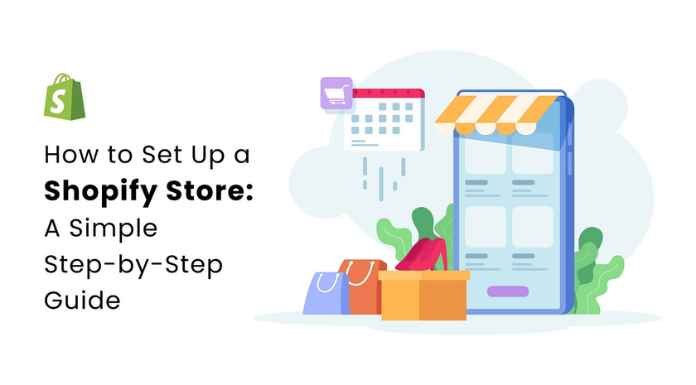Creating an online store with Shopify is a smart choice for entrepreneurs looking to sell products globally. Shopify is a user-friendly e-commerce platform that allows you to set up and customize your store without any coding knowledge. This blog will guide you through each step of setting up a Shopify store, helping you launch your business online.
Guruji Sunil Chaudhary
WhatsApp NOW: +919759999231

Guruji Sunil Chaudhary
WhatsApp NOW: +919759999231
What is Shopify?
Shopify is a comprehensive e-commerce platform that allows individuals and businesses to set up, run, and manage online stores. It’s widely recognized for its user-friendly interface and powerful features that cater to both small businesses and large enterprises. Here’s a more detailed look at what Shopify is and what it offers:
1. Online Store Creation
Shopify provides the tools necessary for building an online store, even if you don’t have technical skills. With a range of customizable templates and drag-and-drop functionality, users can create a unique store design that fits their brand. The platform supports both physical and digital products, making it versatile for different business models.
2. Hosting and Security
When you create a store on Shopify, hosting is included in the package. This means users don’t have to worry about finding a separate hosting service or managing security concerns like SSL certificates. Shopify ensures sites are secure, fast, and available 24/7, with regular updates and maintenance taken care of by the platform.
3. Payment Gateway Integration
Shopify supports multiple payment gateways, making it easier to accept payments from customers around the world. It comes with its own payment solution called Shopify Payments, which allows for seamless transactions without the need for third-party payment processors. However, users can also integrate with other popular gateways like PayPal, Stripe, and more.
4. Point of Sale (POS) Capabilities
Shopify’s POS system extends beyond online sales, enabling merchants to sell in physical stores or pop-up shops. The POS system syncs with the online store, keeping inventory, customer data, and sales information consistent across all selling channels.
5. Marketing and SEO Tools
To help businesses reach more customers, Shopify includes built-in marketing tools. Users can run email campaigns, use SEO features to optimize their store for search engines, and integrate with social media platforms like Facebook and Instagram for direct selling. Additionally, the Shopify App Store offers apps to extend marketing functionalities, such as Google Ads integrations and abandoned cart recovery.
6. Inventory and Order Management
Shopify’s inventory management features let users track stock levels, receive notifications when items run low, and manage orders from a centralized dashboard. This streamlines the process of fulfilling orders, whether selling through the online store, social media channels, or physical locations.
7. Analytics and Reporting
To help businesses make informed decisions, Shopify provides detailed analytics and reports. Store owners can view metrics like total sales, customer behavior, and traffic sources. For advanced analytics, users can integrate third-party tools like Google Analytics to gain deeper insights into their business performance.
8. Scalability
Shopify is designed to grow with businesses, offering different plans based on the size and needs of the store. As sales increase, users can upgrade to higher plans that offer more features, such as advanced reporting, lower transaction fees, and increased staff accounts. The platform also supports enterprise-level businesses through Shopify Plus, a solution for high-volume stores that need more customizations and dedicated support.
9. Extensive App Ecosystem
The Shopify App Store offers thousands of apps and integrations that extend the platform’s functionalities. From email marketing and customer service tools to shipping integrations and advanced analytics, users can customize their store to meet specific business requirements.
10. Customer Support and Community
Shopify provides 24/7 customer support via chat, email, and phone to help users resolve any issues. The platform also has an active community forum where store owners can share tips, ask questions, and learn from other merchants. Additionally, there are various resources like webinars, guides, and tutorials to assist with learning the platform.
Key Features of Shopify:
- Customizable store themes and templates
- Integrated payment processing
- Mobile-optimized shopping experience
- Multi-channel selling (online, social media, physical stores)
- Support for dropshipping and print-on-demand services
- Automatic tax calculations and shipping rate configurations
- Comprehensive customer management tools
- International selling capabilities with multiple currencies and languages
Shopify’s ease of use and rich feature set make it a go-to choice for anyone looking to start an online business or scale an existing one. With solutions tailored to various business needs, it supports diverse industries and offers a seamless e-commerce experience.
Guruji Sunil Chaudhary
WhatsApp NOW: +919759999231
Benefits of Using Shopify
Using Shopify offers numerous benefits that make it an attractive option for businesses of all sizes. Here’s an in-depth look at the key benefits:
1. User-Friendly Interface
- Ease of Use: Shopify’s interface is designed for simplicity, allowing even beginners with no coding skills to set up and manage an online store. The platform provides a drag-and-drop builder that makes customizing the store straightforward.
- Quick Setup: Getting started with Shopify is quick; users can set up a basic store in just a few hours. The guided setup process helps with tasks like adding products, setting up payments, and configuring shipping.
2. Customizable Templates
- Wide Selection of Themes: Shopify offers a variety of free and paid themes, allowing users to choose a design that matches their brand’s style. These themes are customizable, so merchants can modify the look and feel to create a unique storefront.
- Mobile-Responsive Design: All themes are optimized for mobile devices, ensuring that the store looks good and functions well on smartphones and tablets, which is crucial as mobile commerce continues to grow.
- Advanced Customization Options: For users with some coding knowledge, Shopify’s Liquid template language allows for deeper customization of themes, providing more flexibility in design.
3. Integrated Payment Solutions
- Multiple Payment Gateways: Shopify supports over 100 payment gateways, including popular options like PayPal, Stripe, Apple Pay, and Google Pay. This flexibility allows businesses to accept payments from customers worldwide.
- Shopify Payments: Shopify’s in-house payment solution eliminates the need for third-party payment providers, streamlining transactions and avoiding extra fees. It supports all major credit cards and integrates seamlessly with the store.
- Reduced Transaction Fees: With Shopify Payments, users benefit from lower transaction fees, which can significantly reduce the overall cost of running the store.
4. SEO and Marketing Tools
- Built-in SEO Features: Shopify includes tools for search engine optimization, such as customizable title tags, meta descriptions, and URLs. This helps improve the store’s visibility in search engine results, driving more organic traffic.
- Marketing Campaigns: Users can create and manage marketing campaigns directly from the Shopify dashboard. This includes running email marketing campaigns, setting up social media ads, and tracking the effectiveness of each campaign.
- Discount Codes and Promotions: Shopify allows store owners to create discount codes, sales, and special promotions to encourage customers to buy. These features are easy to configure and can help boost sales.
5. Secure and Reliable
- Hosting and Security Management: Shopify handles hosting, security updates, and site maintenance, giving store owners peace of mind. The platform ensures that the site is always up to date with the latest security patches.
- SSL Certificates: Every Shopify store comes with a free SSL certificate, which helps protect customer information and builds trust with shoppers. The certificate ensures that data transferred between the store and the customer is encrypted.
- PCI Compliance: Shopify is Level 1 PCI DSS compliant, meaning that it meets the highest security standards for handling credit card information, which is crucial for protecting both the business and its customers.
6. App Integrations
- Extensive App Ecosystem: The Shopify App Store offers thousands of apps that enhance the store’s functionality. These apps cover a wide range of areas, including marketing, customer support, inventory management, and analytics.
- Seamless Integration: Shopify apps integrate smoothly into the platform, making it easy to add new features without disrupting the existing store setup. Many apps are plug-and-play, requiring little to no technical knowledge to install.
- Third-Party Tools and Services: In addition to apps, Shopify can integrate with various third-party tools, such as accounting software, CRM systems, and email marketing services, helping streamline business operations.
7. Scalability
- Suitable for Businesses of All Sizes: Whether you’re a small business just starting or a large enterprise, Shopify can scale with your needs. The platform offers different pricing plans and features to accommodate growth.
- Shopify Plus for Enterprises: For high-volume businesses, Shopify Plus provides advanced features, customization options, and dedicated support. This makes it a suitable choice for large companies looking to expand their e-commerce operations.
8. Multi-Channel Selling
- Sell on Various Platforms: Shopify allows merchants to sell not just on their online store, but also on social media platforms like Facebook, Instagram, and Pinterest. Users can even sell directly on marketplaces like Amazon and eBay.
- Point of Sale (POS) System: Shopify’s POS system enables businesses to sell in physical locations, such as retail stores or pop-up shops. It syncs with the online store, ensuring inventory and sales data are consistent across all channels.
9. Comprehensive Customer Support
- 24/7 Support: Shopify offers 24/7 customer support via chat, email, and phone, ensuring users can get help whenever needed. The support team is knowledgeable and can assist with a wide range of issues, from technical problems to marketing advice.
- Educational Resources: The Shopify community forum, webinars, blogs, and guides provide users with resources to learn more about e-commerce, marketing strategies, and using the platform effectively.
10. Analytics and Reporting
- Detailed Insights: Shopify provides built-in analytics and reporting tools that help store owners track their sales performance, customer behavior, and inventory levels. This data can be used to make informed decisions about marketing strategies and product offerings.
- Custom Reports: Users can create custom reports based on specific metrics, such as sales by product or customer acquisition sources. For more advanced reporting, Shopify integrates with tools like Google Analytics.
Summary of Key Benefits:
- User-friendly interface with quick setup
- Customizable themes and mobile-responsive design
- Integrated payment processing options with Shopify Payments
- Comprehensive SEO, marketing tools, and multi-channel selling
- Secure, reliable, and PCI-compliant
- Scalable to accommodate business growth
- Extensive app ecosystem for enhanced functionality
- Comprehensive analytics and real-time reporting
- 24/7 customer support and educational resources
With these benefits, Shopify stands out as a versatile and powerful platform for anyone looking to start or grow an online business. Its ease of use, extensive feature set, and scalability make it suitable for a wide range of e-commerce needs.
Guruji Sunil Chaudhary
WhatsApp NOW: +919759999231
Prerequisites for Setting Up a Shopify Store
To set up a Shopify store successfully, it’s important to prepare several essential items in advance. These prerequisites will ensure a smooth setup process and help you launch your store effectively:
1. A List of Products You Wish to Sell
- Product Categories: Decide on the range of products you will offer. It could be physical goods, digital products, services, or a combination of these.
- Product Variants: Determine if your products will have different variations, such as sizes, colors, or materials. This will help you organize your product listings accurately.
- Stock Levels: Have an idea of your inventory levels for each product, especially if you plan to launch with limited stock.
2. High-Quality Images and Descriptions of Each Product
- Product Photography: Use high-quality images that showcase the product from different angles. If possible, include lifestyle images that show the product in use. This helps potential customers get a better sense of the product.
- Image Specifications: Make sure images meet Shopify’s recommended guidelines (2048 x 2048 pixels for square photos), which ensures they look good across all devices.
- Product Descriptions: Write clear and informative descriptions for each product. Include details like size, material, features, and benefits to help customers make informed buying decisions. Consider using SEO-friendly keywords to improve search engine visibility.
3. A Business Name and Logo
- Business Name: Choose a unique and memorable name for your store. Make sure it’s not already taken and consider checking domain availability for consistency.
- Logo Design: A professional-looking logo helps build brand recognition. If you don’t have a logo, you can create one using online tools like Canva or hire a graphic designer. Shopify also has a free tool called Hatchful that can help design a logo.
4. Pricing and Shipping Information
- Product Pricing: Set competitive prices for your products. Consider factors like production costs, profit margins, and competitor pricing.
- Shipping Rates: Determine your shipping policies, including domestic and international shipping rates. Decide whether you’ll offer free shipping, flat-rate shipping, or real-time carrier rates.
- Shipping Zones: Configure different shipping rates based on geographical regions, if applicable. This helps manage costs effectively and provides customers with clear expectations.
- Tax Settings: Understand the tax requirements in the regions where you’ll be selling. Shopify allows you to set up tax rates for different locations automatically.
5. Payment Gateway Setup
- Payment Options: Decide which payment methods you want to offer (e.g., credit card payments, PayPal, Shopify Payments). If you plan to use a third-party payment gateway, make sure it integrates with Shopify.
- Bank Account: Have a business bank account ready to receive payments. This ensures your finances are organized from the start.
6. A Domain Name (Optional)
- Custom Domain: Although Shopify provides a default domain (e.g., mystore.myshopify.com), having a custom domain (e.g., www.mystore.com) looks more professional and builds trust with customers.
- Domain Registration: If you don’t already have a domain, you can purchase one directly through Shopify or use a domain registrar like GoDaddy.
7. Store Policies
- Return and Refund Policy: Draft a clear return and refund policy that outlines the conditions under which customers can return products.
- Privacy Policy and Terms of Service: Have policies in place to inform customers about how their data will be used and the terms for using your site.
- Shipping Policy: Include information on shipping times, rates, and regions served. This sets expectations and can reduce customer service inquiries.
8. Social Media Accounts (Optional)
- Social Media Presence: If you plan to promote your store on social media, have accounts set up on platforms like Instagram, Facebook, or Pinterest. This allows you to integrate social selling features.
- Brand Consistency: Make sure the social media handles are consistent with your store name to maintain a cohesive brand identity.
9. Marketing Plan
- Launch Strategy: Have a plan for how you will announce your store, whether through social media, email marketing, or paid ads.
- Discounts and Promotions: Consider offering introductory discounts or giveaways to attract initial customers.
10. Analytics and Tracking Tools
- Google Analytics: Set up Google Analytics to track website traffic and understand visitor behavior.
- Facebook Pixel (Optional): If you plan to run Facebook or Instagram ads, set up a Facebook Pixel to track conversions and optimize ad performance.
Summary of Prerequisites:
- Products: Detailed list with variations and stock levels.
- Product Information: High-quality images and SEO-optimized descriptions.
- Branding: Business name and logo.
- Pricing and Shipping: Competitive pricing and clear shipping policies.
- Payment Gateway: Preferred payment methods and bank account.
- Domain Name: Custom domain for a professional appearance.
- Store Policies: Return, privacy, and shipping policies.
- Social Media Accounts: Optional for promoting and selling.
- Marketing Plan: Strategies for driving traffic and initial sales.
- Analytics Setup: Tools like Google Analytics and Facebook Pixel.
By preparing these items in advance, you’ll be well-equipped to launch your Shopify store quickly and effectively.
Guruji Sunil Chaudhary
WhatsApp NOW: +919759999231
Step-by-Step Guide to Creating a Shopify Store
Follow these steps to launch your own Shopify store, starting from the initial setup to making your store live.
Step 1: Sign Up for Shopify
- Visit Shopify’s Official Website
- Go to Shopify.com and click on the “Start Free Trial” button.
- Create Your Account
- Enter your email, password, and store name.
- Follow the prompts to complete the setup process. Shopify will guide you through initial questions like whether you already have products to sell or if you are just getting started.
Step 2: Set Up Your Store Details
- Add Your Business Information
- In the Shopify admin, fill in your business details, including business address and contact information.
- Choose your store currency (default is USD, but you can change it as needed).
- Configure Tax Settings
- Add any tax details required based on the locations where you will be selling. Shopify can automatically calculate taxes for many regions.
Step 3: Add Products
- Navigate to Products > Add Product
- In your Shopify dashboard, go to the “Products” section and click on “Add Product.”
- Enter Product Details
- Title: Add a descriptive title for your product.
- Description: Provide a detailed product description, including features and benefits.
- Price: Set the selling price.
- SKU and Inventory: Assign a unique SKU and manage inventory levels.
- Upload Product Images
- Add high-quality images of your product from different angles. Ensure they are optimized for web use (recommended size is 2048 x 2048 pixels for square images).
- Organize Products by Creating Collections
- Group your products into collections or categories (e.g., Men’s Clothing, Accessories, etc.) to make it easier for customers to find items.
- Save and Repeat for Additional Products
- Continue the process until all products are added.
Step 4: Customize Your Store
- Choose a Theme
- Go to “Online Store > Themes” in the Shopify dashboard.
- Choose a free or paid theme that fits your brand, or upload a custom theme if you have one.
- Customize the Theme Settings
- Use the theme editor to adjust the layout, colors, and fonts.
- Preview changes in real-time to ensure your store looks appealing.
- Add Essential Pages
- About Us: Tell your brand story.
- Contact Us: Provide a way for customers to get in touch.
- FAQ: Answer common questions.
- Privacy Policy and Terms of Service: Outline policies to build customer trust.
- Add a Navigation Menu
- Set up the main menu and footer menu for easy access to important sections.
Step 5: Set Up Payment Gateways
- Navigate to Settings > Payments
- Go to “Settings” and then “Payments” to configure payment options.
- Choose Payment Methods
- Use Shopify Payments (Shopify’s built-in gateway) to accept credit cards.
- Add other options like PayPal, Apple Pay, or third-party gateways.
- Configure Payment Settings
- Set the payment capture method (automatic or manual) and test the payment process if needed.
Step 6: Configure Shipping Settings
- Navigate to Settings > Shipping and Delivery
- Access the “Shipping and Delivery” section to configure shipping options.
- Set Up Shipping Zones and Rates
- Define shipping zones for different regions (local, domestic, or international).
- Set flat rates, free shipping, or real-time carrier rates.
- Add Shipping Policies
- Include policies and any additional fees related to shipping in the store settings.
Step 7: Launch Your Shopify Store
- Review Your Store Settings
- Double-check all settings, including products, payment methods, shipping, and store policies.
- Remove Password Protection
- To make your store live, go to “Online Store > Preferences” and remove the password protection.
- Share Your Store Link
- Announce the launch by sharing your store link with friends, family, and potential customers.
- Monitor and Improve
- Keep track of analytics to understand customer behavior and make improvements where needed.
Additional Tips:
- Test Orders: Place a test order to ensure the checkout process works smoothly.
- Install Essential Apps: Consider adding apps for email marketing, reviews, or pop-up offers to enhance your store’s functionality.
- Promote Your Store: Use social media, email marketing, and paid ads to drive traffic and increase sales.
With these steps, you can successfully create a Shopify store and start selling products online.
Tips for Optimizing Your Shopify Store
- Use SEO-friendly product descriptions to attract organic traffic.
- Set up Google Analytics and Facebook Pixel for tracking.
- Offer discounts and promotions to incentivize first-time buyers.
- Regularly update your store with new products and blog posts.
- Provide excellent customer service to retain and grow your customer base.
Guruji Sunil Chaudhary
WhatsApp NOW: +919759999231
Frequently Asked Questions (FAQs)
Q1: Is Shopify suitable for beginners? Yes, Shopify is designed to be user-friendly for beginners, with a straightforward interface and numerous tutorials available.
Q2: How much does Shopify cost? Shopify offers different pricing plans, starting from $39/month. There’s also a free trial to help you get started.
Q3: Can I sell digital products on Shopify? Absolutely! Shopify allows you to sell both physical and digital products.
Q4: Do I need a business license to open a Shopify store? While Shopify itself does not require a business license, local regulations may vary, so it’s advisable to check the requirements for your location.
Q5: How do I get my first customers? Promote your store through social media, email marketing, and Google Ads to reach potential customers.
Conclusion
Creating a Shopify store is a great way to take your business online. With the right strategy and optimization, you can successfully reach your target audience and increase sales. Follow the steps above to set up your store and get started on your e-commerce journey today!
CALL TO ACTION
If you want more personalized guidance in setting up your Shopify store, contact Guruji Sunil Chaudhary for expert advice and coaching.
Guruji Sunil Chaudhary
WhatsApp NOW: +919759999231
Related posts:
 TikTok for Small Businesses: A Step-by-Step Guide
TikTok for Small Businesses: A Step-by-Step Guide
 Top TikTok Trends Businesses Can Leverage in 2024
Top TikTok Trends Businesses Can Leverage in 2024
 Maximizing Brand Awareness with TikTok’s Business Tools
Maximizing Brand Awareness with TikTok’s Business Tools
 TikTok vs. Instagram: Which Platform Is Best for Your Business?
TikTok vs. Instagram: Which Platform Is Best for Your Business?
 How to Craft a TikTok Marketing Strategy That Converts
How to Craft a TikTok Marketing Strategy That Converts
 TikTok Ads: A Complete Guide to Reaching Your Target Audience
TikTok Ads: A Complete Guide to Reaching Your Target Audience
 How to Delete Your Shopify Account: A Complete Guide
How to Delete Your Shopify Account: A Complete Guide
 How to Remove “Powered by Shopify” from Your Store: A Detailed Guide
How to Remove “Powered by Shopify” from Your Store: A Detailed Guide
 Is Shopify Safe? A Comprehensive Guide to Shopify’s Security
Is Shopify Safe? A Comprehensive Guide to Shopify’s Security






 Reverse Manifestation Technique Explained – Manifest Anything in 24 Hours with 500% Speed
Reverse Manifestation Technique Explained – Manifest Anything in 24 Hours with 500% Speed